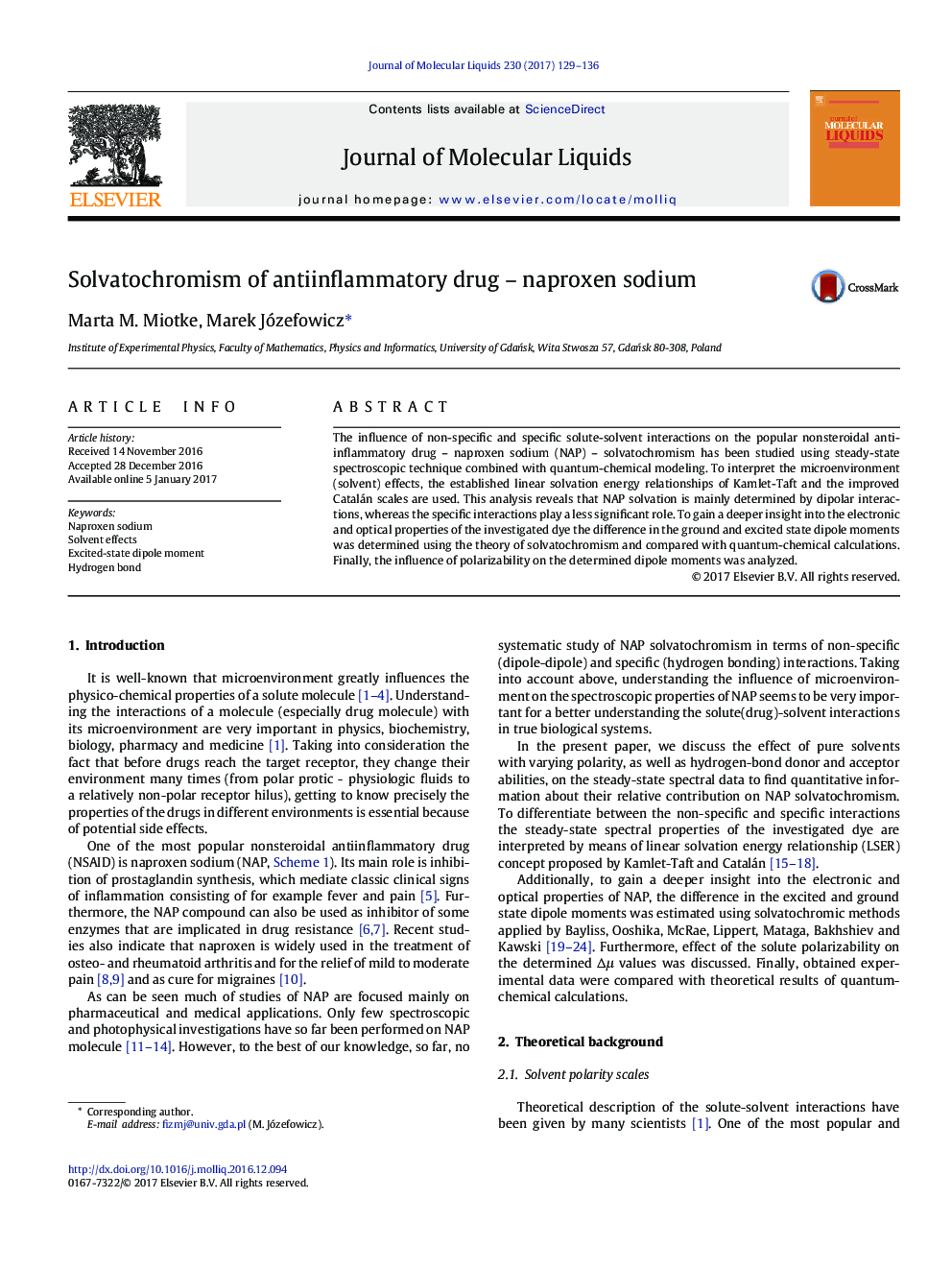| Article ID | Journal | Published Year | Pages | File Type |
|---|---|---|---|---|
| 5408849 | Journal of Molecular Liquids | 2017 | 8 Pages |
Abstract
The influence of non-specific and specific solute-solvent interactions on the popular nonsteroidal antiinflammatory drug - naproxen sodium (NAP) - solvatochromism has been studied using steady-state spectroscopic technique combined with quantum-chemical modeling. To interpret the microenvironment (solvent) effects, the established linear solvation energy relationships of Kamlet-Taft and the improved Catalán scales are used. This analysis reveals that NAP solvation is mainly determined by dipolar interactions, whereas the specific interactions play a less significant role. To gain a deeper insight into the electronic and optical properties of the investigated dye the difference in the ground and excited state dipole moments was determined using the theory of solvatochromism and compared with quantum-chemical calculations. Finally, the influence of polarizability on the determined dipole moments was analyzed.
Related Topics
Physical Sciences and Engineering
Chemistry
Physical and Theoretical Chemistry
Authors
Marta M. Miotke, Marek Józefowicz,
